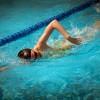CYBERMED LIFE - ORGANIC & NATURAL LIVING
CYBERMED LIFE - ORGANIC & NATURAL LIVING
 Swimming is an individual or team sport that uses arms and legs to move the body through water. The sport takes place in pools or open water (e.g., in a sea or lake). Competitive swimming is one of the most popular Olympic sports, with varied distance events in butterfly, backstroke, breaststroke, freestyle, and individual medley. In addition to these individual events, four swimmers can take part in either a freestyle or medley relay.
Swimming is an individual or team sport that uses arms and legs to move the body through water. The sport takes place in pools or open water (e.g., in a sea or lake). Competitive swimming is one of the most popular Olympic sports, with varied distance events in butterfly, backstroke, breaststroke, freestyle, and individual medley. In addition to these individual events, four swimmers can take part in either a freestyle or medley relay.
Swimming each stroke requires specific techniques, and in competition, there are specific regulations concerning the acceptable form for different strokes. There are also regulations on what types of swimsuits, caps, jewelry and injury tape are allowed at competitions. Although it is possible for competitive swimmers to incur several injuries from the sport -- such as tendinitis in the shoulder-- there are also multiple health benefits associated with the sport.